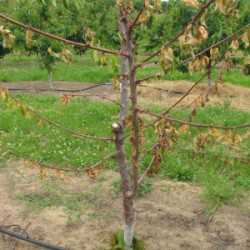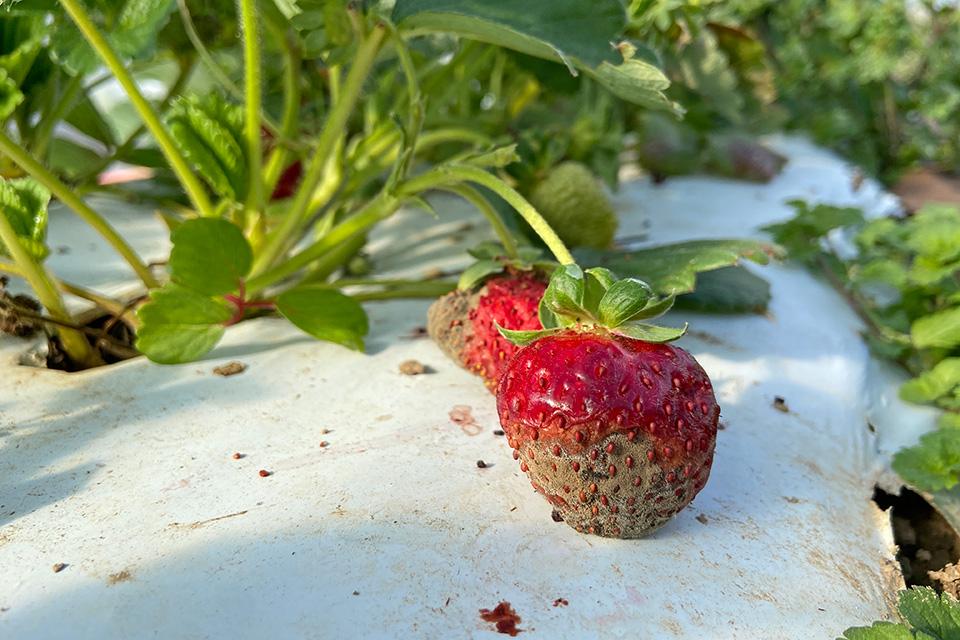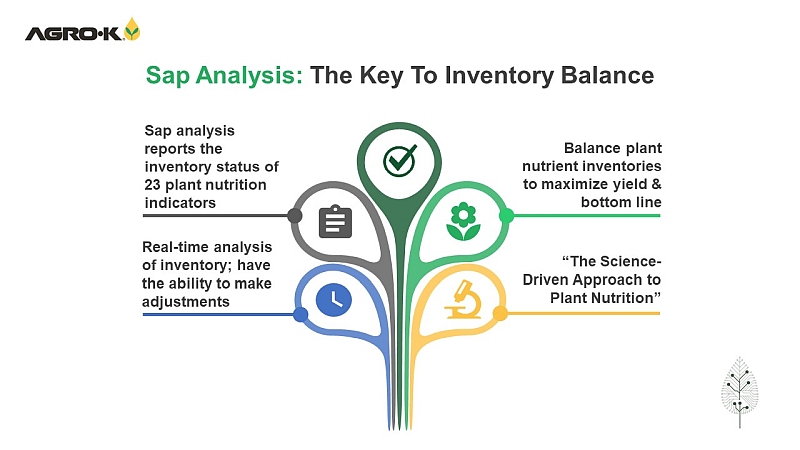Weathering A Freeze

In January, when that usually happens, the trees are hardened off and essentially prepared for such temperatures. But this past November, said Smith, the trees were hardly ready. “Apple and pear trees still had all their leaves, there was no leaf drop at all yet,” he says.
The last part of the tree to harden off in preparation for winter is the trunk, so many trees, particularly those found in the lower areas where cold air tends to pool, picked up a lot of trunk damage. The cambium layer gets killed so it girdles the tree, says Smith. “The roots are alive, the top of the tree is alive, but the trunk is dead,” he says. “The older the tree is, the longer it takes to go down. Some trees hang on for quite a while — in fact I’ve told the field men to be on the lookout because some trees we might not see dead until next year.”
However, Smith notes that while the freeze was certainly damaging, the damage was isolated. In addition, this past spring was the coolest on record, and scientists now believe it was a blessing in disguise. A hot spring may well have caused the trees to start stressing before they were really ready. Crops have been slowed down so much that growers will still be picking late cherry varieties like Sweetheart at the higher elevations into September when normally they’d be done the third week in August. But it hasn’t hurt the crop any. Far from it, in fact, as the crop will approach 16 million boxes, the second-largest crop in history. And the quality is excellent, as the cherries have the biggest average fruit size ever grown, he says.
Naturally, a lot of growers will be seeking to replace dead and damaged trees, especially those found in the lower spots in the orchard. Those growers will have trouble getting replacement trees, as nurseries obviously weren’t immune to the freeze. American/Western Fruit Grower contacted a few of the nurseries to find out what growers can expect in the next few years.
Willow Drive Nursery
Neal Manly, Willow Drive’s chief marketing officer, says they fared about as well as any nursery could, as they have quite a bit of storage space. Their trees for 2011 had all been dug and stored in the warehouse. What was exposed was the budded liners for the 2012 finished trees. The finished trees are a two-year process, so in the months before the freeze they had finished budding the 2012 crop. They are sold out for 2012, but won’t be able to fulfill all that demand.
“It’s created a little bit of a ripple, because we have a 10% to 15% reduction in inventory for 2012,” he said of the freeze. “So we rolled over that 10% to 15% to 2013, but we obviously didn’t plan for that, so a few of the 2013 orders had to be rolled over to 2014. Either growers will have to source from another nursery or catch up in 2014.”
Manly has been very busy talking with his counterparts at other nurseries as well as growers, and they have been understanding about the effects of the freeze. “Growers think it will trickle down for a couple years,” he says. “It will be two to three years before we can weed out all the dead trees.”
As for specifics, Manly says there were surprises. He would have expected cherries to be hit harder, but Willow Drive’s weren’t, though that might come down to the location in the field. Same with the plums, peaches, and soft fruits in general. As for apple varieties, Galas and Jonagolds were the hardest hit. “I can’t say they are most cold sensitive, though,” he adds. “There again, it may be because of where they were in the field.”
As far as a takeaway message for growers, Manly says this freeze was such a freak occurrence — he went back through records over the past 50 years and there was nothing like this — there’s not much. You can’t prepare for every extreme. “There’s only so much you can do to shut your trees down. You turn off fertilizer and water. You can defoliate (with micronutrients such as zinc and copper), but even if you’d done everything perfectly, who knows? You can never, in my opinion, prepare for every extreme situation.”
Cameron Nursery
Cameron Nursery was among the hardest hit nurseries, says Paul Tvergyak, marketing director. Unlike a nursery such as Willow Drive, smaller nurseries in the southern part of the state like Cameron don’t have as much storage capacity. What limited storage they have, they use for cherries and peaches. As for apples, they store their trees in the field and dig them up much later, like January. Cameron had some of their 2011 crop stored in the warehouse, but none of the 2012 crop. “Our 2011 crop was not entirely in storage before the freeze and therefore we either lost immediately 30% or chose not to sell another damaged 10% to 15% after greenhouse testing,” he says. “We plowed our entire 2012 crop under; it was not a complete kill, but it was easier and cheaper to just destroy it.”
Tvergyak says he has been working with other nurseries, making sure that he takes care of his customers as much as he possibly can. Like Manly, he says it’s difficult to take much away from the frost because it was such a freakish event, and with the nursery’s storage situation, he was aware of the possibilities. But he says Cameron is well back on track, and is completely sold out for 2013.
As for growers, he advises planning as far ahead as they can. Not so much with varieties, which will be dictated to a great degree by the warehouse and market, but with rootstocks. Layer beds, where rootstocks are produced, take three to four years. “If nurseries have a bad year and the layer beds don’t produce, there might be a shortage of a certain size of rootstocks. You use a larger rootstock for benchgrafts, for example,” he says. “It’s getting more expensive and taking more time to import rootstocks. Plan as far ahead as you can and think hard about rootstocks. Get those rootstocks tied down, get those contracts signed, because if you cancel prior to budding the nurseries won’t mind.”
Overall, Tvergyak says the fall freeze of 2010 is a reminder that agriculture in general and the nursery business in particular is an industry like no other. “These are trees; these aren’t widgets. You plan three to four years ahead in nursery business, so it will take three to four years to get back to normal. 2013 will be OK, but we won’t meet entire demand. It will be 2014 before we get there. In 2014, we will be back to normal. Though ‘normal,'” he adds with a laugh, “is a relative term.”









